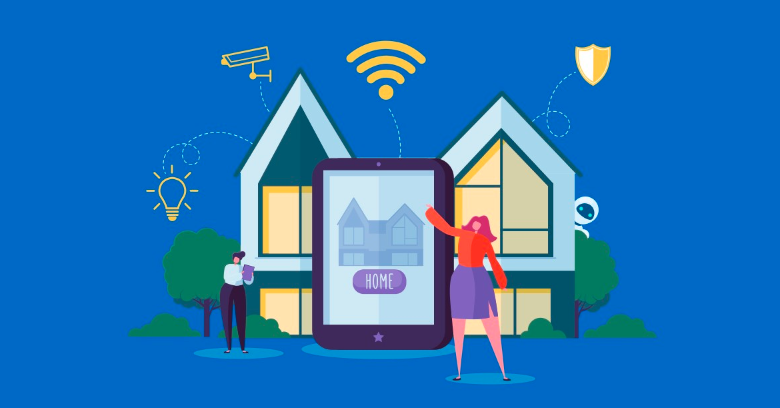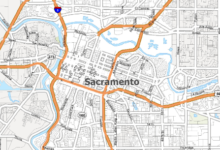The Future of Urban Living: Trends Shaping Real Estate

The landscape of urban living is constantly evolving, influenced by a myriad of factors ranging from technological advancements to socio-economic shifts. As we look to the future, it becomes essential to understand the trends that are reshaping real estate, not just in terms of architecture and design but also in how we interact with our living spaces. This article delves into the most significant trends poised to define urban living in the years to come.
Technological Integration in Smart Cities
The rise of smart cities is revolutionizing urban living. From smart homes equipped with IoT devices to entire neighborhoods designed to be energy-efficient, technology is at the heart of modern real estate development. These innovations are not only making life more convenient but also more sustainable. Smart grids, autonomous vehicles, and AI-driven city management are just a few examples of how technology is being integrated into urban environments. Additionally, QR codes are increasingly being used in various public services, allowing residents to easily access information, make payments, and interact with city infrastructure in a seamless manner.
Sustainability and Green Building Practices
As environmental concerns become more pressing, the real estate industry is increasingly focused on sustainability. Green building practices are no longer a niche but a necessity. Developers are incorporating renewable energy sources, eco-friendly materials, and efficient waste management systems into their projects. Additionally, urban planning now often includes green spaces, vertical gardens, and energy-efficient public transportation options, all aimed at reducing the carbon footprint of cities.
Rise of Mixed-Use Developments
Mixed-use developments are becoming the norm in urban areas. These developments combine residential, commercial, and recreational spaces into a single complex, offering a more integrated and convenient lifestyle. Residents can live, work, and play within the same area, reducing the need for long commutes and fostering a sense of community.
Remote Work and the Home Office Boom
The COVID-19 pandemic has permanently altered how we work, with remote work becoming a standard practice for many industries. This shift has led to a reimagining of home design, with an emphasis on creating functional and comfortable home offices. Real estate developers are now prioritizing properties that offer flexible spaces, high-speed internet, and amenities that cater to remote workers.
The Popularity of Micro-Apartments
As urban populations grow and space becomes more limited, micro-apartments are gaining popularity. These small, efficiently designed living spaces appeal to young professionals and those seeking affordable housing in expensive cities. Despite their size, micro-apartments are often equipped with modern amenities and are located in vibrant, central areas, making them a practical choice for many urban dwellers.
Emphasis on Community-Centric Living
The future of urban living is increasingly community-centric. Co-living spaces, shared amenities, and communal areas are becoming more prevalent in residential developments. This trend is driven by a desire for social interaction, shared experiences, and a sense of belonging in the urban environment. Developers are creating spaces that encourage community engagement, from shared gardens to co-working spaces.
Health and Wellness-Oriented Designs
Health and wellness have become central to urban living, influencing everything from building design to community planning. There is a growing emphasis on creating environments that promote physical and mental well-being. This includes everything from access to natural light and clean air to amenities like gyms, yoga studios, and wellness centers within residential complexes.
Adoption of AI and Automation in Property Management
Artificial intelligence and automation are streamlining property management processes. From AI-powered chatbots handling tenant inquiries to automated maintenance systems, these technologies are making property management more efficient and cost-effective. This trend is likely to continue, with AI playing an increasingly significant role in everything from lease management to predictive maintenance.
Shift Towards Modular and Prefabricated Construction
Modular and prefabricated construction methods are gaining traction as a solution to the challenges of urban development. These methods allow for faster, more cost-effective construction while maintaining high-quality standards. Prefabricated buildings can be assembled in a fraction of the time required for traditional construction, making them an attractive option for developers looking to meet the growing demand for urban housing.
Flexible and Adaptive Urban Spaces
The concept of flexible and adaptive spaces is becoming crucial in urban planning. As cities grow and evolve, so must their infrastructure. This trend involves creating buildings and public spaces that can be easily adapted for different uses over time. For example, a commercial space might be designed to convert into residential units, or a parking lot could be transformed into a public park as transportation needs change.
Urban Resilience and Disaster Preparedness
With climate change and natural disasters becoming more frequent, urban resilience is a critical consideration for future real estate developments. Cities are increasingly focusing on disaster preparedness, incorporating features like flood-resistant infrastructure, earthquake-proof buildings, and robust emergency response systems. Urban planning now often includes measures to ensure that cities can withstand and quickly recover from disasters.
Affordable Housing Solutions
The issue of affordable housing is a significant challenge in many urban areas. As property prices continue to rise, there is a growing need for innovative solutions that provide affordable yet high-quality housing options. This includes everything from government-subsidized housing programs to new financing models that make homeownership more accessible to lower-income families.
The Role of Public Transportation in Urban Development
Public transportation plays a vital role in shaping urban real estate. As cities aim to reduce traffic congestion and lower carbon emissions, there is a strong emphasis on developing efficient and reliable public transportation systems. Transit-oriented developments (TODs) are gaining popularity, where residential and commercial spaces are concentrated around major transit hubs, making it easier for residents to commute without relying on cars.
The Impact of 5G and High-Speed Internet
The rollout of 5G and other high-speed internet technologies is set to transform urban living. These advancements enable the proliferation of smart home devices, enhance remote work capabilities, and improve overall connectivity within cities. Real estate developments that offer robust internet infrastructure are becoming increasingly attractive to tech-savvy residents and businesses.
Evolving Retail Spaces in Urban Areas
Retail spaces in urban areas are undergoing significant changes as e-commerce continues to grow. Traditional brick-and-mortar stores are being replaced or complemented by experience-driven retail spaces that offer more than just shopping. This includes concepts like pop-up shops, interactive showrooms, and mixed-use spaces that blend retail with dining and entertainment options.
Integration of Nature in Urban Planning
As urbanization continues, there is a growing emphasis on integrating nature into urban environments. This trend includes the creation of green spaces, urban parks, and rooftop gardens, which provide residents with access to nature within the city. These green areas not only enhance the aesthetic appeal of urban spaces but also contribute to the physical and mental well-being of residents.
The Future of Urban Mobility
Urban mobility is rapidly evolving, with new modes of transportation shaping how we navigate cities. From electric scooters and bike-sharing programs to autonomous vehicles and high-speed trains, the future of urban mobility is diverse and dynamic. Real estate developments are increasingly considering the impact of these transportation options, with a focus on reducing reliance on private cars and promoting sustainable mobility solutions.
Cultural and Social Considerations in Urban Design
Urban design is increasingly taking cultural and social factors into account. This includes preserving historical landmarks, promoting local art and culture, and designing spaces that reflect the unique identity of the community. Developers are also focusing on creating inclusive spaces that cater to diverse populations, ensuring that cities remain vibrant and culturally rich.
Read also: Clipart:25bteheovbk= Smores
Globalization and its Influence on Urban Real Estate
Globalization continues to influence urban real estate, with cities around the world becoming increasingly interconnected. This trend is evident in the growing demand for international investment in urban properties, the influx of expatriates, and the blending of architectural styles from different cultures. As a result, urban real estate markets are becoming more competitive and diverse.
The Importance of Data and Analytics in Urban Planning
Data and analytics are playing an increasingly important role in urban planning and real estate development. By leveraging big data, cities can better understand the needs and behaviors of their residents, leading to more informed decision-making. This includes everything from traffic management and energy consumption to housing demand and public safety. Real estate developers are also using data analytics to identify emerging trends and make strategic investments.
FAQs
What are smart cities and how do they affect real estate?
Smart cities are urban areas that use technology and data to improve the quality of life for their residents. This includes everything from smart grids and energy-efficient buildings to AI-driven city management systems. In real estate, smart cities lead to the development of more sustainable, convenient, and connected living environments.
Why is sustainability important in urban living?
Sustainability is crucial in urban living because it helps reduce the environmental impact of cities. By adopting green building practices, using renewable energy, and promoting public transportation, cities can lower their carbon footprint and create healthier living conditions for residents.
How has remote work changed urban real estate?
Remote work has significantly influenced urban real estate by increasing demand for homes with dedicated office spaces and high-speed internet. Developers are now focusing on creating properties that cater to remote workers, including flexible spaces and communal areas for collaboration.
What are mixed-use developments?
Mixed-use developments are complexes that combine residential, commercial, and recreational spaces in one location. These developments offer a more integrated lifestyle, allowing residents to live, work, and play within the same area, reducing the need for commuting.
What role does public transportation play in urban development?
Public transportation is essential for reducing traffic congestion, lowering carbon emissions, and making cities more accessible. Transit-oriented developments, which are built around major transportation hubs, are becoming more popular as they offer convenience and sustainability.
How is technology shaping the future of urban living?
Technology is revolutionizing urban living through innovations like smart homes, AI-driven property management, and high-speed internet. These advancements are making cities more efficient, sustainable, and connected, improving the overall quality of life for residents.
Conclusion
The future of urban living is being shaped by a combination of technological advancements, environmental considerations, and changing socio-economic dynamics. As cities continue to grow and evolve, the trends discussed in this article will play a crucial role in defining how we live, work, and interact with our environments. From smart cities to sustainable developments, the real estate industry is at the forefront of these changes, driving innovation and improving the quality of life in urban areas.


